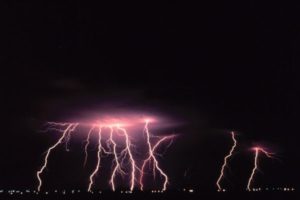 During the Thanksgiving holiday the Southland got a little more relief from our record-breaking drought conditions. While it’s important that we get enough rain to hopefully end our dry conditions and restore our groundwater levels, it’s also important to keep people and properties safe during and after rainstorms.
During the Thanksgiving holiday the Southland got a little more relief from our record-breaking drought conditions. While it’s important that we get enough rain to hopefully end our dry conditions and restore our groundwater levels, it’s also important to keep people and properties safe during and after rainstorms.
Areas of particular concern are slope stability and water intrusion. When an area has been particularly dry, slope stability issues can threaten properties in and around the slope. Unstable slopes can move very slowly or very quickly, and lead to property foundation issues as well as safety hazards. This is especially true for burn areas where the plants and trees have been destroyed and the integrity of the soil has been undermined.
In fact, California’s drought has caused hillside soils in many areas to dry out, which leads to surface cracks that fill with rainwater during a storm. Once the water is in the cracks it causes dry, shrunken soil to expand, which is destabilizing and may lead to slope failure since the soil is now pushing against itself and gravity is working to pull the destabilized soil downward. A slope failure should be quickly corrected, and common solutions include retaining walls and drainage system installations.
Solutions should include developing an appropriate plan of investigation and include a roadmap for the associated repairs. In extreme cases, emergency actions may be required, including installing sandbags and temporary drainage devices, plastic sheeting, sump pumps and piping, or other appropriate solutions. Often, designing a surface or subsurface mitigation system can help contain the movement of debris, such as soil and rocks. For instance, the Helfrich-Associates’ team of specialists will cooperate closely during the investigation and design phase, and in some cases develop a system of concrete piers, drilled, driven or helical anchors and surface drainage improvements to protect properties or areas from a landslide’s movement. The movement, if not mitigated, can cause severe damage to existing buildings or prevent buildings from being constructed in the future.
Water intrusion is also a consequence of high-volume rainstorms, and can lead to serious environmental health issues, such as mold growth. In addition to any mold issues, water trapped inside a building can mix with other substances in the building and can lead to contaminated standing water that could pose a risk to anyone coming in contact with the water. Standing, contaminated water can also be a breeding ground for bacteria and mosquitos, and can lead to structural issues for buildings on the property. There can also be issues for adjoining properties, which can in turn will draw the ire of neighbors and possibly result in increased litigation risks. If you’ve ever had a property that has issues with surface water drainage, then you know full well the damage and headache it can cause.
Rain and floodwaters will always follow the path of least resistance. That means that any surface water that accumulates on your property will likely find its way into the bottom-most levels of any of your nearby structures (or your neighbors). In buildings with basements, water will begin to seep into the structural elements of the building before entering the interior. If the grading of the property was done incorrectly, for instance sloping toward any structure on the property, this problem will be exacerbated. That could lead to problems for any untreated wood within the structure, and result in any number of structural failures.
Properly graded properties can avoid these issues. In addition, installing a gutter system on any structure that resides on the property will help move water away from the structure. The gutter system should include gutters along the roofline as well as downspouts leading away from the base of the structure and toward a lower elevation. Be sure to consult an engineering firm before starting, as improper grading can lead to litigation should surface water drainage issues negatively affect nearby properties. Also, in some states, improper surface water drainage can run afoul of local or state groundwater regulations. Plan to work with your builder and a civil engineer, geotechnical engineer or geologist to prevent water from affecting structures on your property. Property owners should also establish a fund to pay for regular maintenance of drainage systems.
At Helfrich-Associates, we work with property owners and builders to ensure that any issues with grading and drainage are avoided before they become a problem. If surface water drainage does become a problem, we also work with affected property owners to identify and resolve the issues that lead to the problem.
Have you ever had to deal with water intrusion or slope issues on your property? What was the result? Let us know in the comments, below.
You can also join in on the conversation on our Facebook, Twitter or LinkedIn pages.
